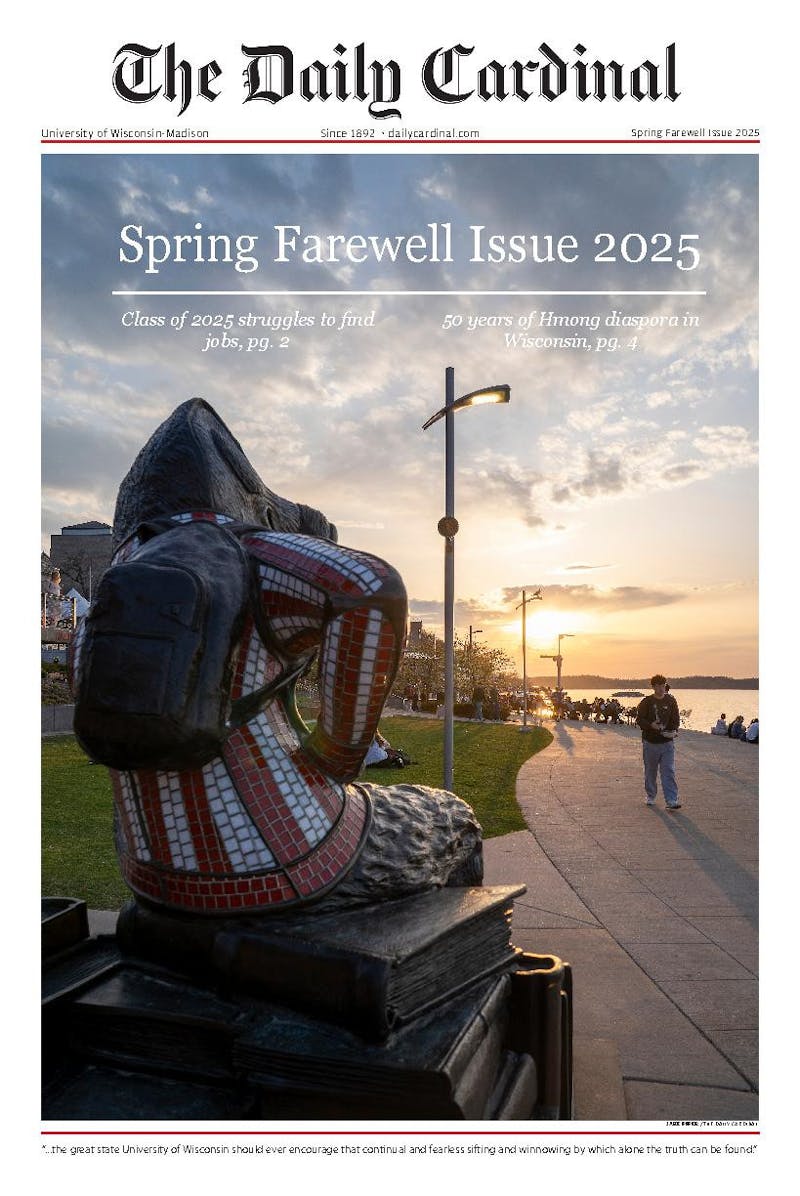A modern trend in the art of filmmaking has had writers and directors striving to revamp old movies and old movie formulas into technology-hyped, teen-esque remakes. Examples are ""Joy Ride,"" ""Swimfan,"" ""Brick"" and now, ""Disturbia,"" a credible thriller and wholly decent high school version of the 1954 Jimmy Stewart flick ""Rear Window.""
""Disturbia"" stars Shia LaBeouf as Kale, a troubled teen who feels responsible for a violent car crash that killed his father one year ago. Kale is put on house arrest for the summer after punching his Spanish teacher during class, and he soon finds out that being confined to his home is much harder than it seems. After his mom (Carrie-Anne Moss) cuts off his Xbox, TV and iTunes, Kale is forced to discover other, more traditional sources of entertainment. He, along with best friend Ronnie (Aaron Yoo) and new neighbor Ashley (Sarah Roemer), use binoculars and a video camera to capture the intimate details of the lives of the people next door. Things turn nasty, however, when Kale believes that Mr. Turner (David Morse), the shy neighbor who mows his lawn twice a day, could be a serial killer from Austin, Texas.
""Disturbia"" uses a lot of old-school methods to achieve its unexpected and serious terror value. It's all about window reflections, surprise villain appearances, secret passageways and a musical score full of dynamic dips and turns. All of these elements set ""Disturbia"" apart from most contemporary teen horror flicks. Instead of using blood, gore and death to scare its audience, it uses maddening suspense. Without a doubt, this movie's culminating scenes deserve a spot in the Suspense How-to Book right between the night vision scene in ""Silence of the Lambs"" and the shower scene in ""Psycho."" It's that intense. And that well-done.
""Disturbia"" does struggle a little bit in the loose-ends department, but this struggle is seemingly invisible to all but the critical eye. Some of the plot devices seem unfinished or wholly unnecessary. Also, there seems to be a lot of missed opportunities for further development of the Kale character. Much of ""Disturbia"" is about Kale's achievement of manhood. He must defeat the guilt over his father's death and in turn become the man of the house. His heroics are genuine; however, some scenes needed to be axed completely for a total plot success. For instance, the first scene is entirely unneeded, and the love story with new neighbor Ashley is presented with far too much detail. The film's intentions get slightly muddled amid dangling, feel-good messages about the woes of high school and teen conformity, but all of these things are scarce. Overall, ""Disturbia"" is hilarious, refreshing, and utterly terrifying.
It's also a lot better if the audience has actually seen the original 1954 version. Kale's motions in ""Disturbia"" are often slightly skewed mirror images to the motions of L.B. Jefferies (Jimmy Stewart) in ""Rear Window."" Both main characters have an itchy leg, Jefferies's due to a leg cast and Kale's due to the electronic device around his ankle used to keep tabs on his whereabouts. There's also the goddess-like girlfriend, played by Grace Kelly in the original and seductively reprised by Sarah Roemer in the remake. Like its predecessor, ""Disturbia"" is loaded with comedy, drama and wicked paranoia. It's totally solid and definitely worth a look.





